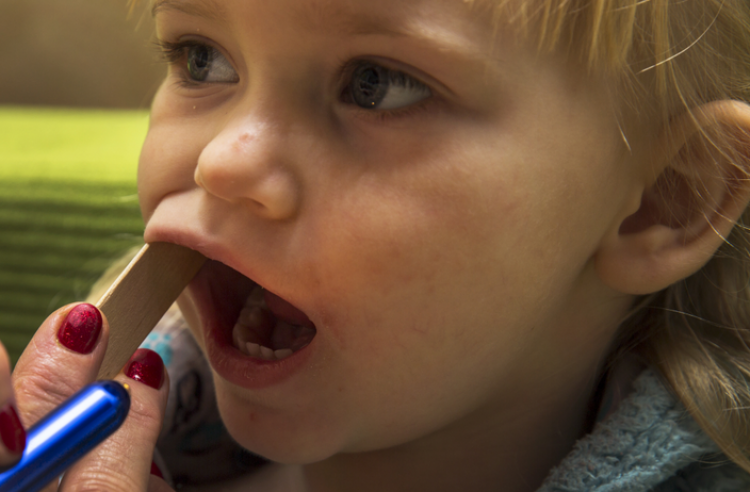Cancer is much less common in elephants than in humans, despite the fact that they have larger bodies and consequently many more cells which should lead to more problems of cancer in aging cells. Researchers think that they may have an explanation for this phenomenon — and it might someday lead to new ways of protecting people from cancer.
Elephants' cells contain 40 copies of a major cancer-suppressing gene known as p53, Humans have just two – one from each parent. The gene helps damaged cells repair themselves or self-destruct when exposed to cancer-causing substances. The findings aren't conclusive proof that those extra p53 genes make elephants cancer-resistant, but if future research confirms it, scientists could try to develop drugs for humans that would mimic the effect.
Dr. Joshua Schiffman, a pediatric cancer specialist at the University of Utah who is the leader of two teams working on this topic, began his research after hearing a lecture in 2012 by Dr. Carlo Malley about Peto's paradox. That refers to the fact that large animals including elephants and whales, have comparatively low cancer rates even though they have many more cells than smaller species. In fact whereas one in four humans dies of cancer, among elephants the rate is about one in twenty, and this despite the fact that elephants can live to ages similar to that of humans.
Malley mentioned that elephants seemed to have extra copies of the p53 gene. Schiffman's patients include children with because of a condition called Li-Fraumeni syndrome have only one p53 gene, which greatly increases their chances of developing cancer. So Schiffman sought to find clues from the blood of elephants. It is not so easy to obtain samples of elephant blood but Schiffman was fortunate to catch an elephant show at a local zoo where the keeper announced that he took blood samples every week from the elephants. Schiffman asked for the samples and later got others from a travelling circus to enable his group to test eight elephants in all.
Schiffman's team — as well as a second group of scientists — pinned down the size of the elephants' surplus — 20 pairs. The second team found that many other species have only one pair, just like humans.
Schiffman and his colleagues compared how elephant cells reacted to radiation, compared with cells from 10 healthy humans and 10 patients with Li-Fraumeni syndrome. The elephant cells self-destructed at twice the rate of healthy human cells and more than five times the rate of cells from patients with the syndrome. Cells that don't self-repair or self-destruct when exposed to carcinogens become prone to developing cancer.
“Up until this point we had only researched animals with a high risk of developing cancer, for example pet dogs” said Schiffman in a newspaper interview later. “When I heard Dr. Malley discussing animals which do not develop cancer, something snapped inside me. Suddenly I understood that instead of researching high-risk animals to learn how it develops, we could learn from those on the other side of the scale, meaning that their risk factor for cancer is the lowest. We could then take their results and use them to help humans”.
The second team working with Schiffman inserted elephants' p53 genes into mouse cells and found that those cells behaved just like elephants and self-destructed when exposed to DNA-damaging drugs, said co-author Vincent Lynch, an evolutionary biologist at the University of Chicago.
Schiffman has a personal motivation to be at the forefront of the fight against cancer. At age 15 he himself was diagnosed with a Non-Hodgkin's Lymphoma. He spent a torrid summer suffering from operations and radioactive treatments, and in this way became interested in oncology. After studying at Brown University's medical school and specializing in pediatric oncology, he did his postdoctoral research at Stanford Lab which uses the human genome to find ways to prevent cancer. In this way he feels he can save others from the grueling experience he went through.
p53 has been known for a while as a leading tumor suppressing agent in cancerous cells. Dr. Sir David Lane, one of those who discovered the protein in the 1970's, has dubbed it the “guardian of the genome” for it's therapeutic possibilities. Originally, though, it wasn't clear at all that p53 was a protective protein. In fact researchers thought it might be one of the genes responsible for cancer development. Professor Moshe Oren was then a young researcher in the Princeton Lab which was among the first to announce the discovery of the gene. Professor Varda Rotter, another Israeli researcher was at the Massachusets institute of Technology (MIT) working with Nobel prize winner Professor David Baltimore. She too identified the protein inside a cancerous growth. When Oren and Rotter returned to Israel they continued to research the protein and managed to clone it in a lab, as well as developing other methods of identifying it in cells.
However the results of research were inconclusive regarding p53's role in development of cancer. By 1989 it became apparent that the exact opposite was the case: p53 suppressed cancer and fought any developing tumors, although once tumors developed it could mutate into a tumor increase factor. In a healthy person the protein was responsible for destroying unhealthy cells and preventing others from developing, thus acting as a DNA protector.
Schiffman, who had spearheaded the research of p53 in elephant blood, still did not have any idea how he could effectively use the protein to help humans. In April this year Schiffman, who grew up in the Solomon Schechter school in Rhode Island, paid his first ever visit to Israel. His lecture on the subject of p53 in elephants intrigued Professor Avi Schroeder, a Technion nanotechnology expert, and his lecture on targeted drug delivery caught the attention of Schiffman as well. The two realized that targeted drug delivery, which involves developing tiny vehicles within the bloodstream to convey medicines to diseased tissues within the body, while avoiding healthy ones, could be the solution for utilizing p53 in humans.
Nanotechnology, a scientific discipline which has developed remarkably in the last decade, uses microscopic medicine balls which can be injected into a person's veins and will automatically arrive at the damaged tissue and cure it. One nanometer measures one millionth of a millimeter. A ball containing p53 which measures 100 nanometers could theoretically find its way to the right place to heal the tissue, since healthy tissue looks like an unbroken pipe without any leaks in it and the ball will travel easily through it while the diseased tissue has holes the size of 200-300 nanometers and consequently the balls will be able to go inside and provide a cure for the disease.
The first nano-medicine to reach the market, hedoxil, was developed by two Israeli scientists, Professor Chezi Bernholz of the Hebrew University and Professor Alberto Gavison, head of the Oncology department at Shaarei Tzedek. Hedoxil now serves 300,000 breast cancer and ovarian cancer patients yearly and sales have reached nearly a billion dollars a year. Schroeder wrote his doctorate under Bernholz's tutelage and was thus able to study nanotechnology procedures from Bernholz. He later opened his own lab in the Technion and hopes to bring to market a nano-medicine which will utilize Schiffman's results regarding p53 within 2 years by both creating therapeutic p53 and then packaging it in nano-particles.
“Secondary tumors – or metastatic cancer – are the biggest challenge in fighting tumors,” explains Professor Schroeder. “This is due to the fact that these tumors are small, unpredictable and highly scattered, and attack a patient when their immune system is weak from fighting the primary tumor. The nanoscale vehicles we are developing are capable of locating the diseased tissue and releasing the drugs it is carrying directly at the targeted area.”
Prof. Schroeder and his colleagues from the Northern United States have already raised more than one million dollars for this future study from major American organizations.





